The Flow of the Nile
A cruise on the Nile River reveals Egypt’s trove of captivating culture, history, and beauty at just the right pace
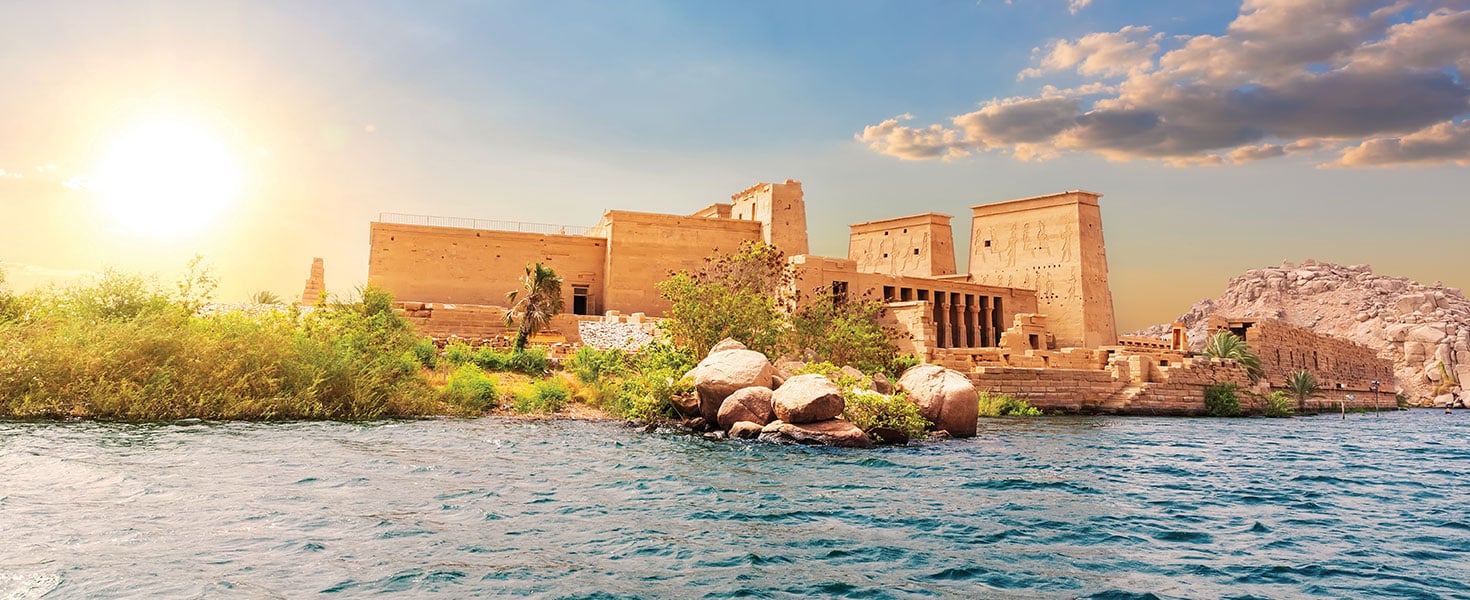
The view through the picture window of my stateroom looked like a scene from a television travel show—so much so that I thought David Attenborough might start narrating at any minute.
A flock of snow-white cattle egrets flew by, skimming the slate-blue waters of the legendary Nile River. The water flowed as if it were on a silent mission. Huge palm trees heavy with golden dates lined the riverbank like a curtain. In more barren areas, I viewed a snapshot of life carrying on the way that it had done for thousands of years: laundry flapping outside mudbrick houses, cows and water buffalo impatiently swatting away flies, and children swimming and splashing in the river water, waving and calling out to our boat as it passed. Time slipped away as I stood transfixed, watching life unfold at the river’s pace.
No matter where we live, the Nile is one of the first rivers we learn about. The word “Nile” immediately conjures images of Egypt, even though the river flows for some 4,100 miles through four other countries and has its headwaters in lakes in Uganda, Kenya, Tanzania and Ethiopia. Here in Egypt, its very existence seems impossible: a life-sustaining stripe of blue that slices through the forbidding camel-colored sands, like a devil-versus-angel struggle to keep the Sahara Desert at bay. Egypt’s story—and part of humanity’s story—starts with the Nile, settled by people so long ago that our modern minds struggle to comprehend the timeline.
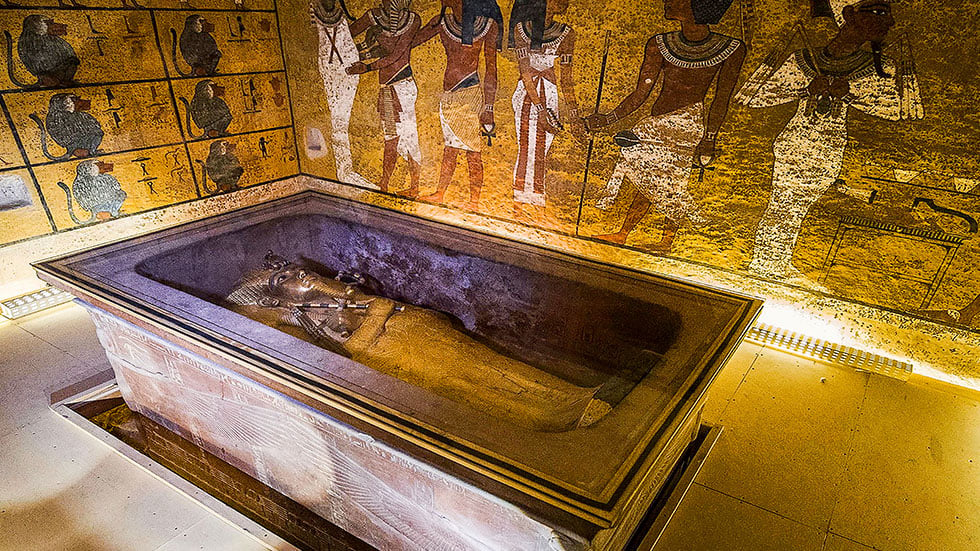
King Tut Tomb
Ancient Egyptian pharaohs took to the Nile to unite the country, and military and merchant missions plied the waters to reach foreign lands. The majority of Egypt’s ancient monuments, temples and tombs are within easy reach of the river, and the ubiquitous ankh, the key of life firmly clutched by pharaohs and gods in ancient art (and found on tourist souvenirs all over the country), is said to be shaped like the Nile, with its teardrop-like top loop representing the delta.
The magnetic mystery of this river has drawn travelers for millennia—from 5th-century BC Greek historian Herodotus, who famously called Egypt the “gift of the Nile,” to Victorian-era European travelers seeking winter sun—and I was following in their wake on a Nile cruise.
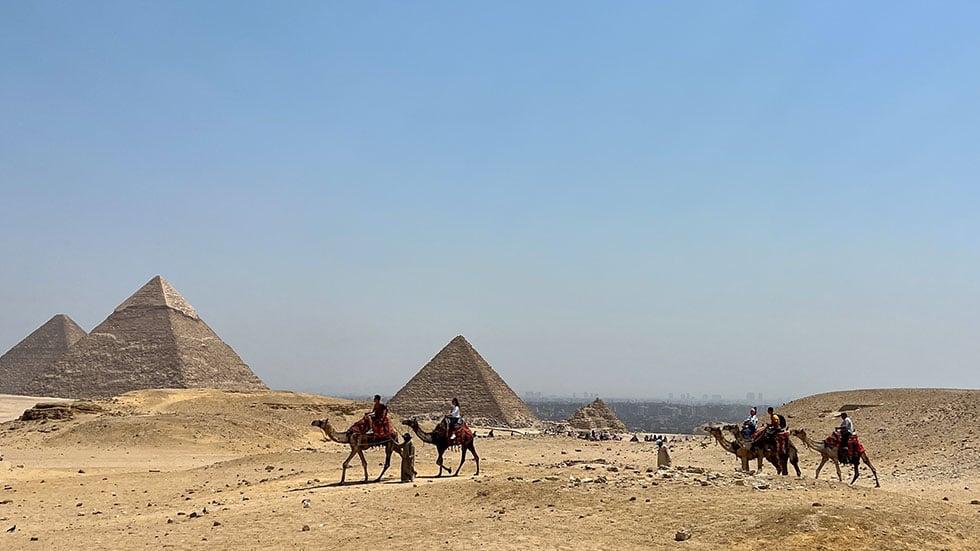
Pyramids of Giza
UNCOVERING THE CAPITAL: CAIRO
Nearly every traveler’s visit to Egypt starts in Cairo, as did mine. The country’s capital hums with energy and brims with intriguing museums and age-old markets. Upon wading into its artifact-filled museums, I immediately felt the depth and layers of history. From my hotel’s rooftop bar, I could spot the tips of the Pyramids of Giza peeking out above Cairo’s modern skyline. In Saqqara, an area south of Cairo that’s home to the oldest pyramid in the world, I saw archaeologists busy at work, perhaps unearthing new discoveries that are rewriting history.
Every artifact found reveals more of Egypt’s story, and newly opened museums are showcasing the country’s heritage in a beautiful light. The National Museum of Egyptian Civilization opened in 2021 with a grand parade that moved 22 royal mummies from the 1902 Egyptian Museum on Tahrir Square through the capital’s streets. The long-anticipated Grand Egyptian Museum promises to assemble for public view all of Tutankhamun’s treasures in the same place for the first time ever, and that’s just part of the 100,000 artifacts that will be on display. Sights such as these make Cairo the perfect introduction to the Egyptian adventure that awaits.
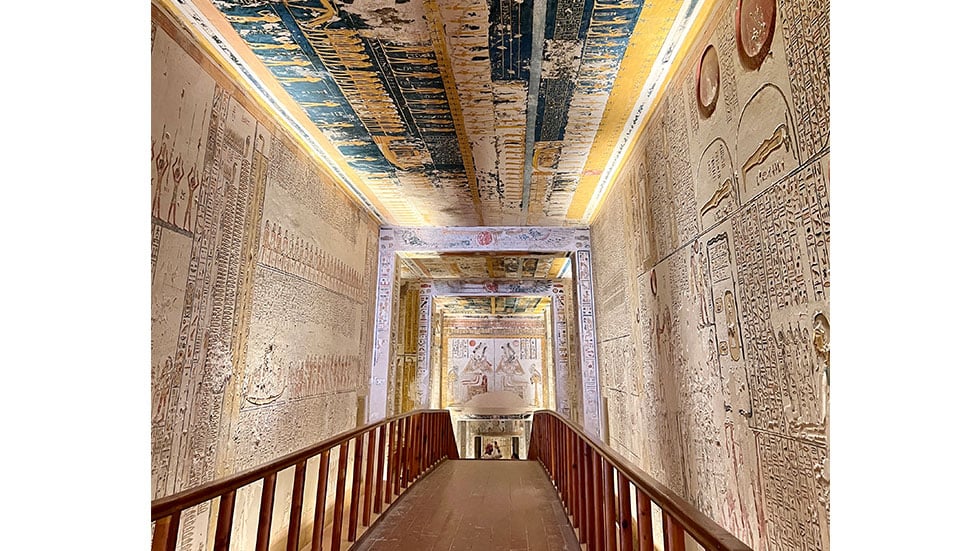
Valley of the Kings
UNEARTHING THE TREASURES OF LUXOR
While most tours through Egypt begin in Cairo, Nile cruises often start in Luxor, some 400 miles south, easily reached on a one-hour domestic flight. Dubbed the largest open-air museum in the world, Luxor is where the bounty of Egypt’s ancient monuments resides. Two impressive temples steal the show on the east bank of the Nile, the “land of the living” by ancient Egyptian custom, where the sun shines its first rays each day.
I felt happily lost weaving my way under the canopy of 70-foot-tall columns at Karnak, one of the largest religious sites in the world; at more than 200 acres, its footprint is more than double that of Vatican City. The 1.7-mile-long sculpture-lined Avenue of Sphinxes—constructed 3,000 years ago but opened to modern travelers for the first time in 2021—links Karnak to Luxor Temple, where I saw the layers of Egypt clearer than anywhere else: an ancient pharaonic-era sacred space converted into a Greco-Roman temple later adapted into a Christian monastery that now has a mosque built on top of its foundation. Walking through Luxor Temple during the call to prayer at the mosque was particularly atmospheric as the muezzin’s melodic voice echoed off the ancient sandstone.
The ancient Egyptians considered the west bank, the land of the setting sun, the realm of the dead. This side of the Nile showcases elaborately decorated tombs and mortuary temples virtually everywhere you turn. I was initially skeptical of the Valley of the Kings, the once-secret burial place of New Kingdom pharaohs that’s now among Egypt’s most-visited attractions, because, unlike the Pyramids, the site doesn’t look impressive at all at ground level. The rocky, barren pathways that lead to nondescript tan metal security doors outside each tomb give no indication of the artful carvings and paintings found on the walls on the inside.
Many of the tombs are awash in colorful columns of hieroglyphs laying out spells from the Book of the Dead and reverent illustrations of the pharaohs making offerings of perfumes, stalks of lotus and papyrus, and bundles of bread to please the gods. Glancing up at the navy-blue ceilings inside some tombs, I felt as if I were gazing into the heavens. The first corridor of the tomb of Ramses III is speckled with child-like five-pointed stars, while the ceiling in the burial chamber of Ramses V & VI is adorned by the curved body of the sky goddess Nut, who swallows the sun every evening before giving birth to it the next morning. Before we entered the tombs, our group’s Egyptologist guide recounted stories of the pharaohs and the meaning of the hieroglyphs.
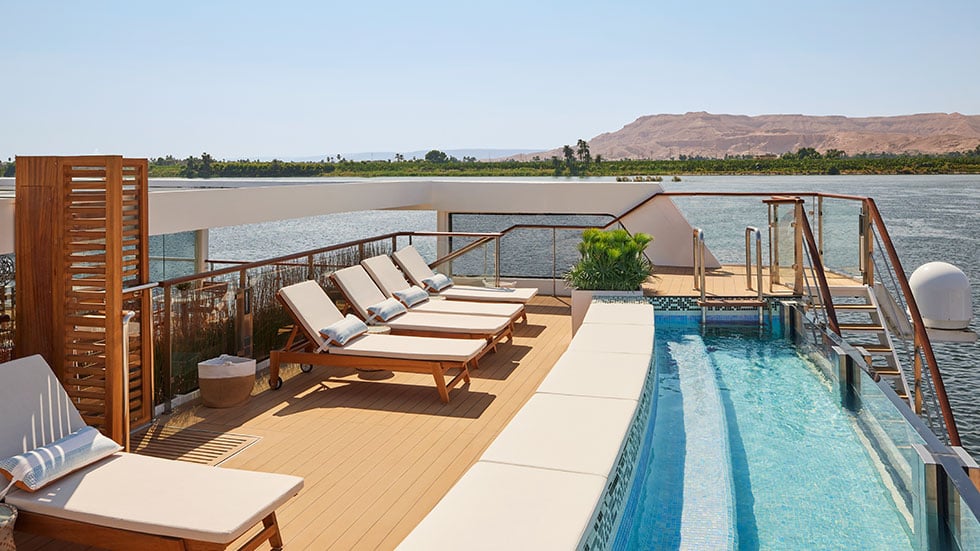
Cruising the Nile River
TAKING TO THE WATERS OF THE NILE
After exploring the splendors of Luxor for two days, it was time to travel as the pharaohs did: on the Nile. This mode of transport might be timeless, but I was boarding a state-of-the-art ship: the Viking Osiris, built specifically to navigate the Nile and launched in August 2022. Accommodating just 82 guests and with a crew of 65, this intimate ship is outfitted in Viking’s trademark Scandi-chic style of blond woods and an airy, minimalist interior. But the vessel also has thoughtful Egyptian touches; think huge slabs of banded blue-brown onyx in the lofty reception area and wooden screens in the restaurant inspired by the crates seen in local markets. After a day of dusty sightseeing, this place is exactly where I wanted to relax and recharge.
The distance between Luxor and the southern city of Aswan, the start and finish points for most Nile cruises, is only about 150 miles, easily drivable in a half-day. But why would you? Egypt rewards those who travel slowly, and the Nile is the best route to do so.
As the ship set off from Luxor across the river's glassy surface, I stood by the sundeck railing to soak it all in. Time ceases to be important on the river, and only the color of the light marks its passage: the blue stillness that hangs in the morning air like a comforting cloak, the white afternoon blaze that forces your eyes into a squint and lulls you into a dream, and the glowing orange and pink embers of the fading sunset. Nile cruises are punctuated by stops at temples that against all odds have stood the test of time.
Nile cruises dock near a handful of temples—each of them unique—including that at Kom Ombo, and offer land excursions to Philae and Abu Simbel from Aswan. Viking also makes time in the itinerary for two less-visited but just-as-worthy temples north and south of Luxor: the Temple of Hathor at Dendera and the Temple of Khnum in Esna.
Near the end of our cruise, in Edfu, I walked through the shadowy halls of the Temple of Horus, one of the biggest and best preserved in Egypt. I imagined the scene as it must have been thousands of years ago: chanting priests raising their voices to the gods, the heavy perfume of incense lingering in the air, and the darkened chambers and corridors illuminated by a single piercing shaft.
As I disembarked from the Nile cruise, I turned around to get a last glimpse of the ship and the mighty river. Life continues to move as it always has, and the Nile current and its stories flow on. How lucky I was to witness and be a part of the show.
